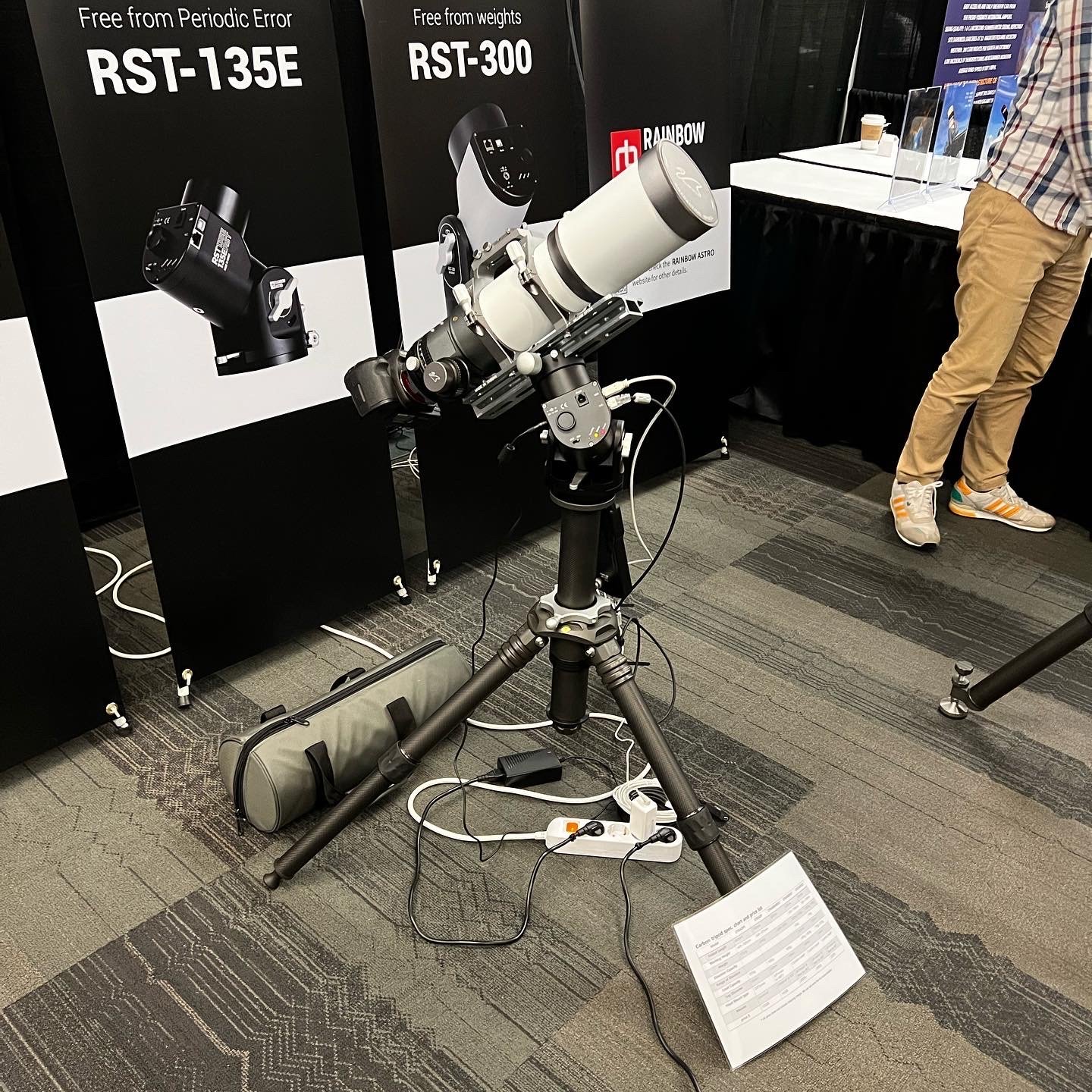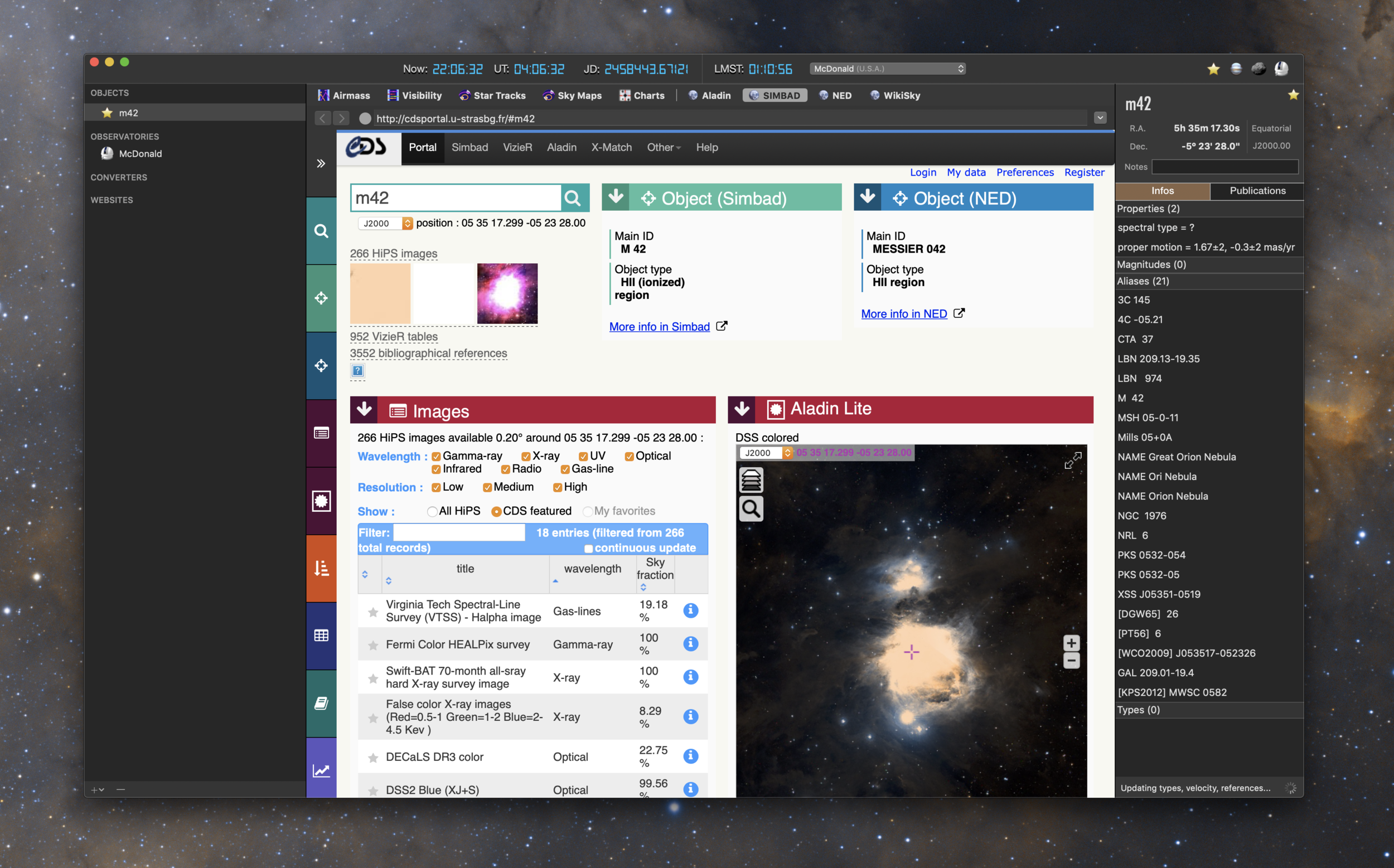Looking for a powerful, free tool to enhance your planetary, lunar, and solar astrophotography? LuckyStackWorker offers automated batch processing, adaptive sharpening, and advanced noise reduction—perfect for refining stacked images on macOS, Windows, and Linux. Download it today and take your astrophotography to the next level!
Advanced Imaging Conference 2022
INDIGO A1 (All-in-one) Mac Astrophotography Software Released
Apple announces ARM CPU based Macs
Observatory Astronomical Image Library updated to 1.5.1
Basically I was just interviewed on the Mac Power Users podcast
AstroPixel Processor 1.072 Released
The latest version of Astro Pixel Processor has been released.
Lots of support for Sony cameras has been added.
Improved Drizzle/Bayer Drizzle.
Lots of changes and improvements to
Image EXIF data,
console panel
progress monitors
Improved loading for frames
fixed some memory issues
dynamic distortion correction.
Improved star analysis
GUI frame panel scrolling
Head over to the APP website to get the latest version. Take a look at the full update notes here.
KStars/EKOS 3.1 is released!
An update to my current favorite imaging platform has been released. In this release there’s a bunch of 3.0 fixes as well as a hand full of new features.
Fixes to the scheduler to cover some multi-object multi-night scheduling.
Ring-field focusing, an improvement to star selection methods for focusing.
Updates to the meridian flip code.
Huge updates to the official documentation.
Polar alignment routines for non-GOTO mounts.
Live view for DSLR’s so you can now focus easier.
A host of other random fixes and improvements.
Get the updated file at the Kstars download site.
Quick note for Mac users: there’s a bug with offline plate solving in this release, and is expected to be fixed soon.
KStars/EKOS 3.0 released with new features
The team behind KStars and EKOS have been busy wrapping up a new version of their imaging software just in time for the holidays. There’s a lot of new features in this one.
The first major feature is the XPlanet solar system viewer developed by Robert Lancaster. It’s a significant upgrade over the built-in viewer.
Robert also created a new interface for the FITS viewer which can how show you all the data of your images in a new side panel which features the FITS header info, Histogram, Statics, and recent images.
Additionally, Eric Dejouhanet dedicated time to a huge scheduler rewrite. The scheduler system previously allowed for scenarios where you could have conflicts in operations, but with the rewrite all this has been fixed and numerous improvements have been added:
Dark sky, which schedules a job to the next astronomical dusk/dawn interval.
Minimal altitude, which schedules a job up to 24 hours away to the next date and time its target is high enough in the sky.
Moon separation, combined with altitude constraint, which allows a job to schedule if its target is far enough from the Moon.
Fixed startup date and time, which schedules a job at a specific date and time.
Culmination offset, which schedules a job to start up to 24 hours away to the next date and time its target is at culmination, adjusted by an offset.
Amount of repetitions, eventually infinite, which allows a job imaging procedure to repeat multiple times or indefinitely.
Fixed completion date and time, which terminates a job at a specific date and time.
A few other enhancements are a new scripting and DBus system allow for 3rd party applications to take advantage/control of features with EKOS which will open up the system for more options down the road.
Other improvements and new features can be found on Jasem’s (lead developer) website.
Here’s a few more screens of the rest of the updated interface panels.
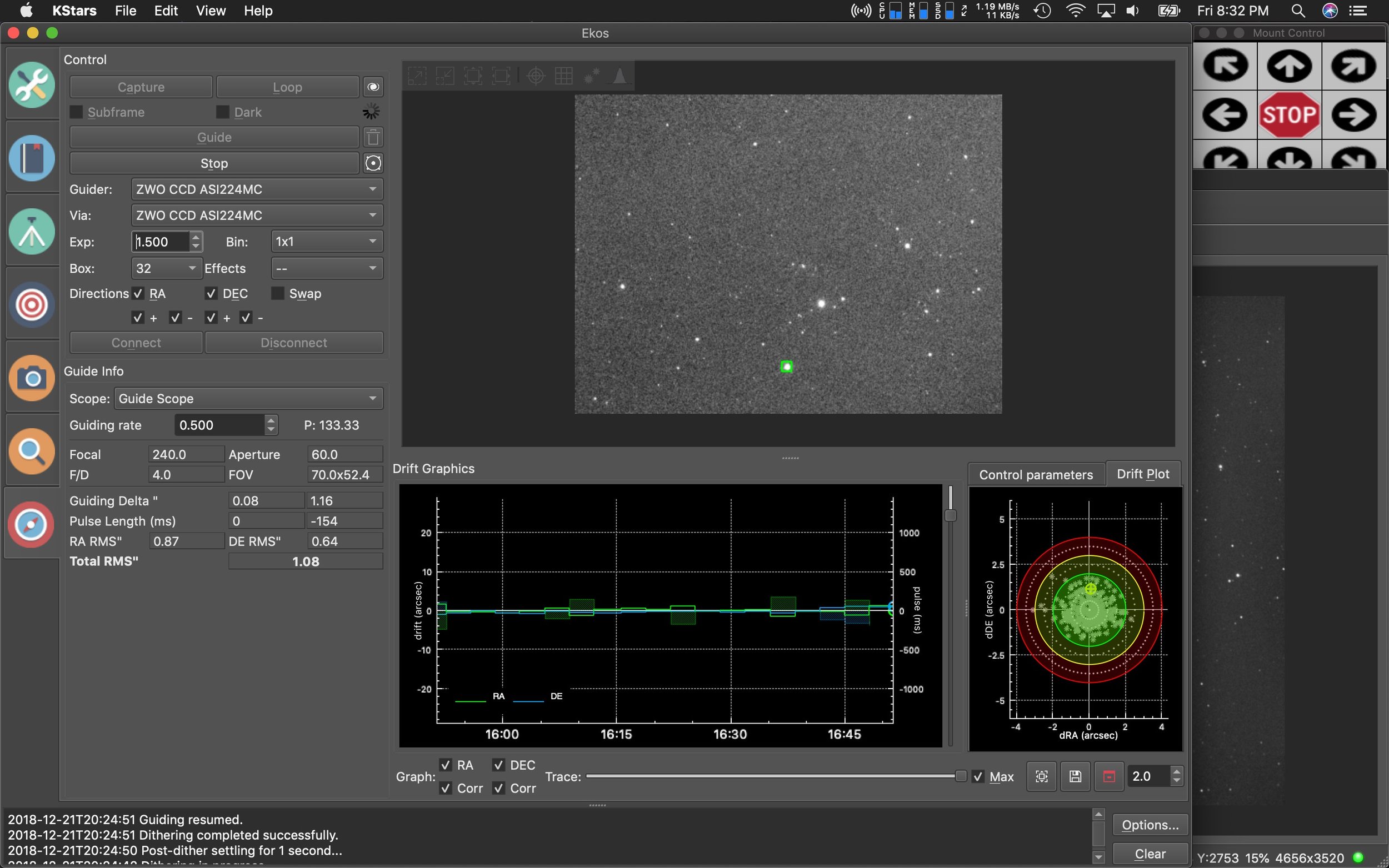
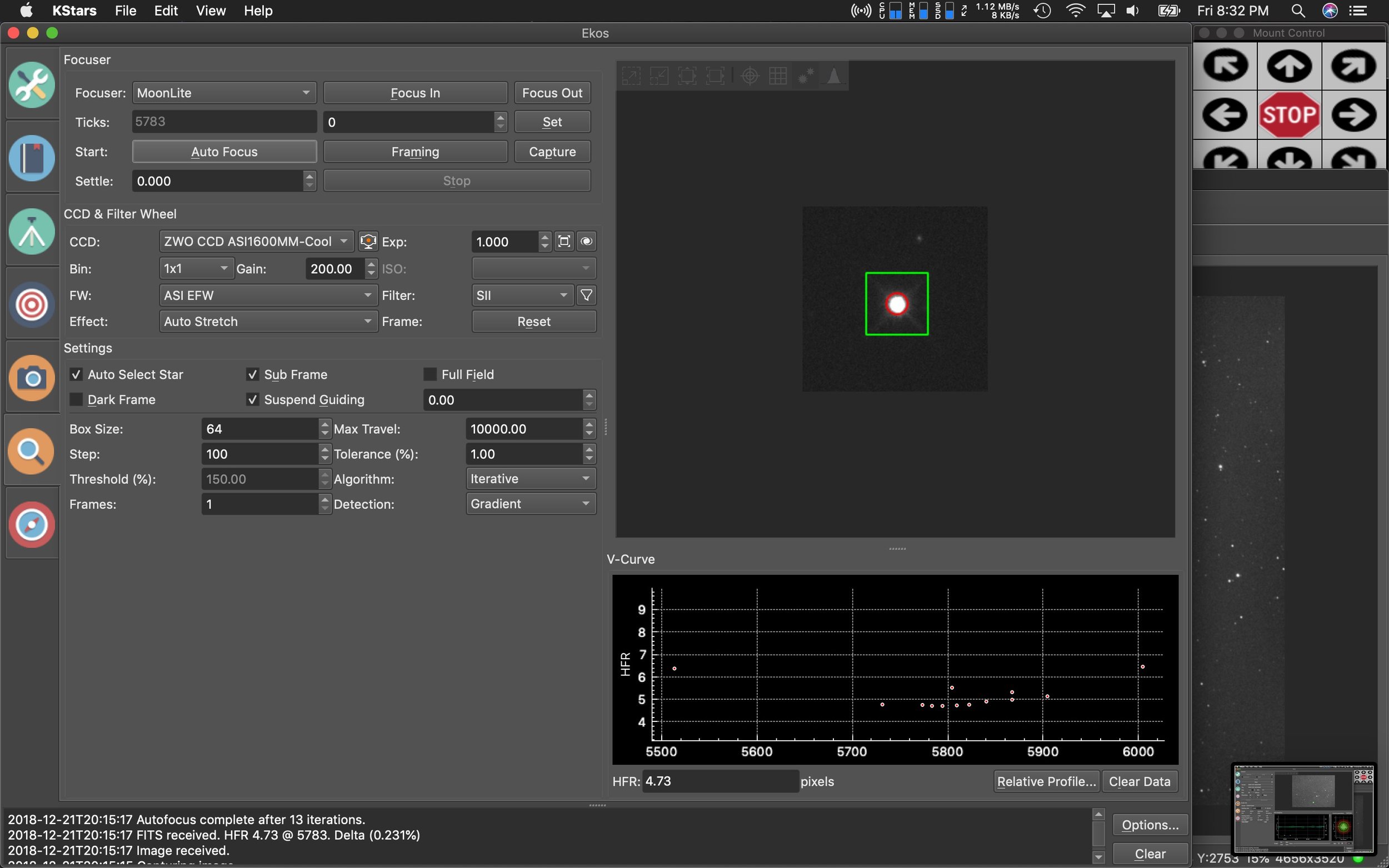
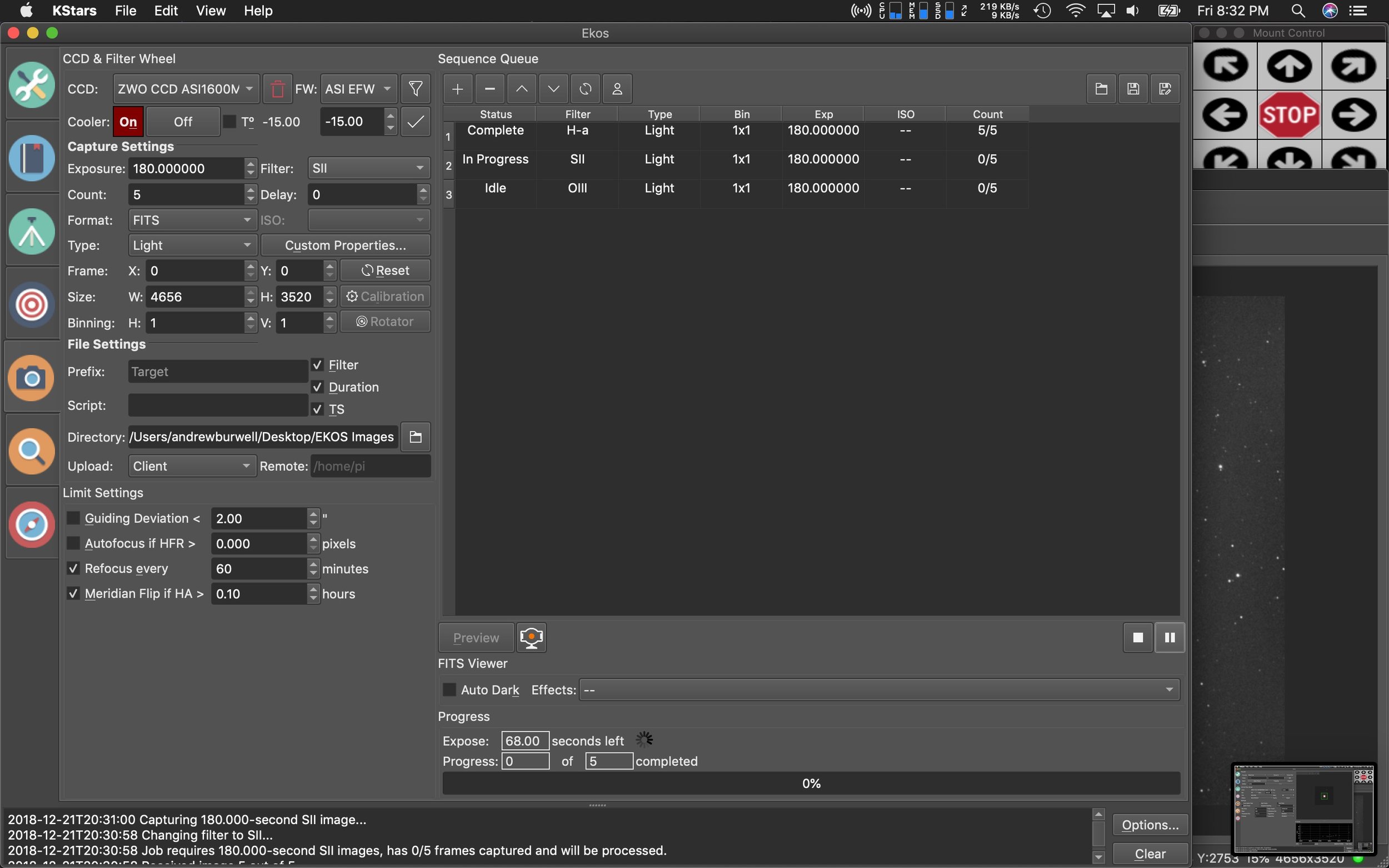
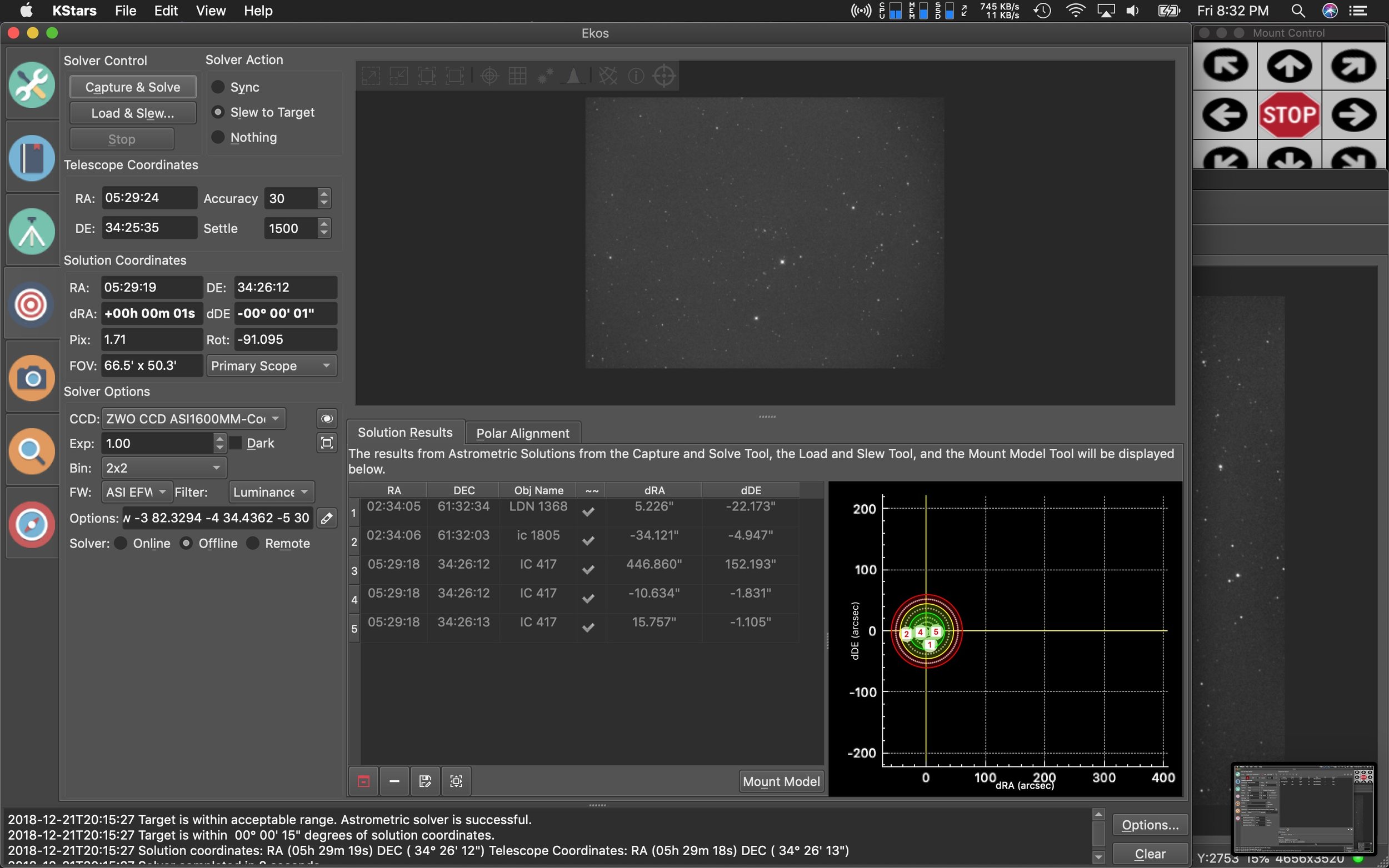
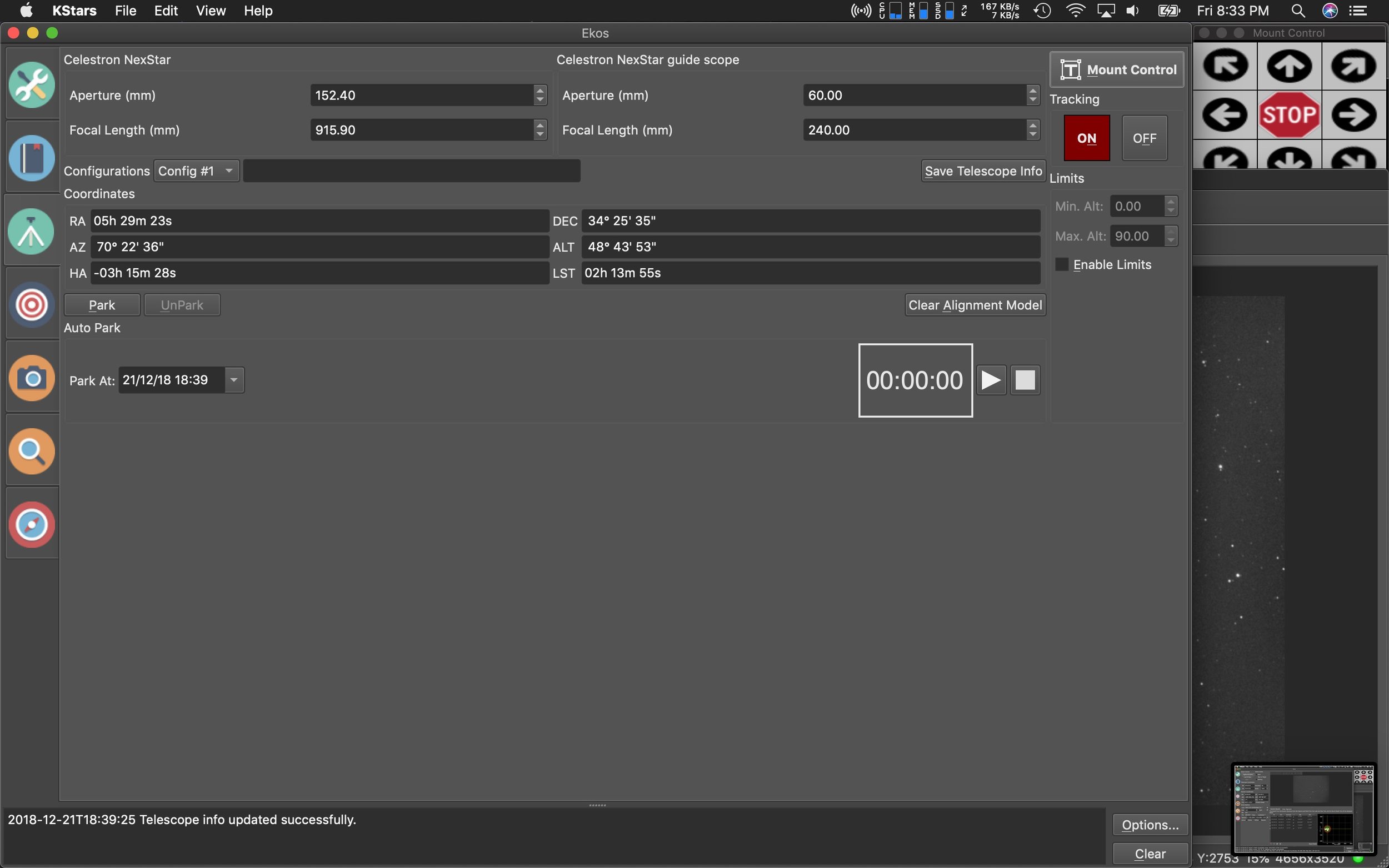
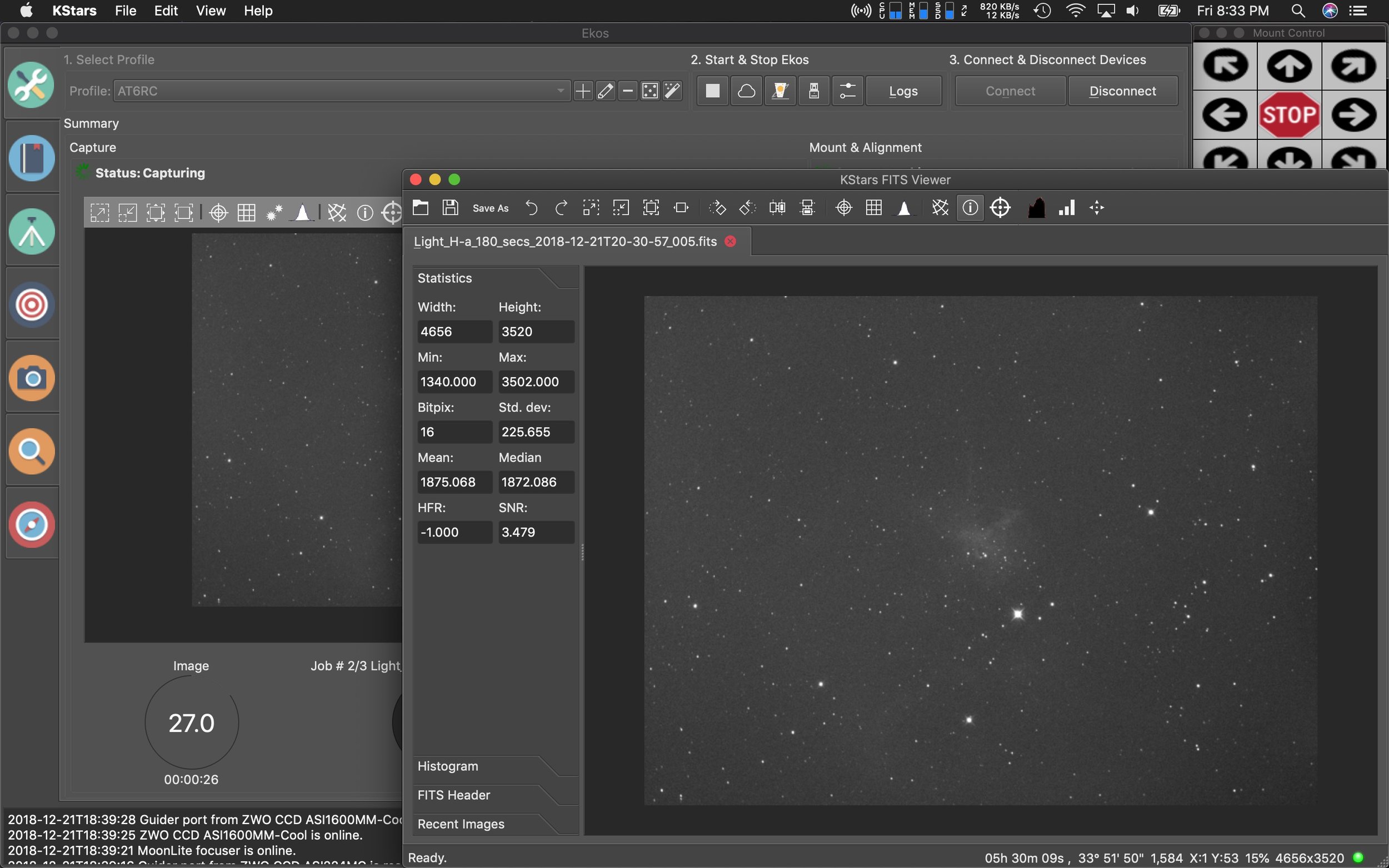
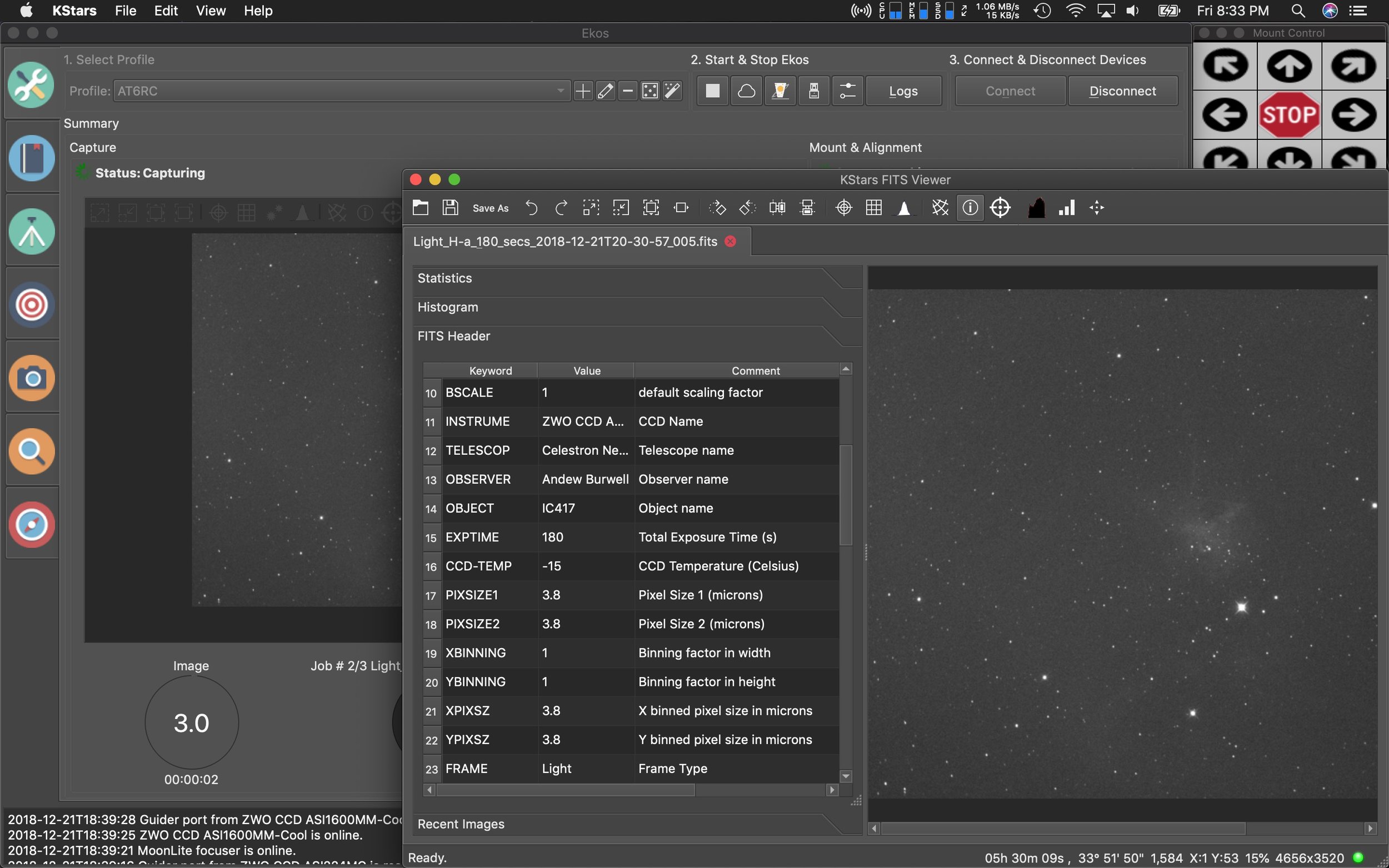
iObserve gets a new release, now with Mojave Dark Mode support
A little over a year ago, iObserve saw its last update. The developer (Cedric Follmi) had put the Mac iObserve application on hold to devote time to an online only web version over at arcsecond.io. But after a year or so of developing efforts on the website, he put up a poll online asking users what development path they would like to see going forward. Continue the website? Update the Mac app to be compatible with Mojave? Make an even better Mac app longer term? Given those choices, people voted, and now there’s a new Mac application.
What’s new in iObserve 1.7.0?
Added full support for macOS 10.14 Mojave with a complete update of the app internals (especially about network requests and dates).
Dropped support for all macOS versions before High Sierra (10.13).
Mojave Dark Mode
Suppressed the large title bar to adopt a more modern and compact look .
Suppressed the ability to submit new observatories by email, and explain that Arcsecond.io is the new home for observatories.
Fixed the failing downloads of the sky preview image (available when clicking the icon to the right of the object name in the right-hand pane).
Fixed an issue that prevented the app to complete the import of a Small Body.
Fixed an issue that prevented the user to select a Small Body in the list when multiple ones are found for a given name.
Fixed the failing downloads of 2MASS finding charts.
Fixed various stability issues.
Get the latest version directly from the Mac App Store.



